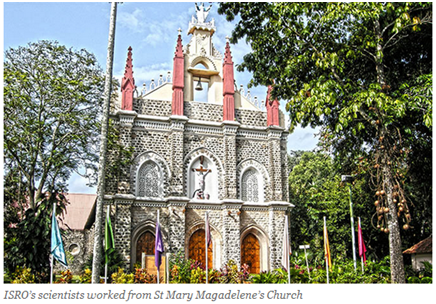Atmospheric and space research in India began in the 1920s with ground based sounding of the ionosphere. Other researchers added to theoretical foundation of space science in the next two decades. In 1945, two scientists established research institutes, the Physical Research Laboratory and the Tata Institute of Fundamental Research, which established an organized space research capability in India. Research into cosmic radiation, testing of airborne instruments, and studies of the upper atmosphere were carried out.
In 1950, India created the Department of Atomic Energy (DAE) which was used to fund space research at various research institutes across India. In this period, experiments were dedicated to meteorology and the Earth's magnetic field. The Uttar Pradesh State Observatory was constructed in 1954 and the Rangpur Observatory was constructed in 1957. The United States provided technical support and scientific cooperation for these two observatories. IN 1957, the first Earth orbiting satellite, Sputnik 1, was launched by the Soviet Union.
India created the Indian National Committee for Space Research (INCOSPAR) in 1962 just five years after the launch of Sputnik 1. The Committee took over responsibility for space research from the Department of Atomic Energy. One of the major actions of the Committee was to establish the Thumba Equatorial Rocket Launching Station at Thumba, a fishing village on the southern tip of the Indian subcontinent. The Thumba location is close to the magnetic equator of the Earth. This makes it an ideal location for atmospheric research.
At first, the circumstances were primitive on a site surrounded by groves of coconut palm. Offices were in an old church and a cattle shed was the assembly facility. The first sounding rocket was launched from Thumba in late 1963 carrying an instrument package on a suborbital flight. The United States, Great Britain, France and the USSR all assisted India in the development and launch of sounding rockets. In the next twelve years, three hundred and fifty sounding rockets were launched from Thumba.
The INCOSPAR began developing the Rohini family of rockets for India. The name was taken from a favorite wife of Krishna. The different members of the family are designated by the letters RH for Rohini and a number that indicates the diameter of the rocket in millimeters. The first Rohini rocket, RH-75, was launched in 1967 from Thumba. It weighted about seventy pounds and was about three inches in diameter. Fifteen of these were launched in 1967 and 1968.
The Indian Space Research Organization (ISRO) was created in 1969 to replace INCOSPAR. ISRO is now one of the largest national space organizations in the world. The ISRO continued work on the Rohini family of rockets. In 1969, Sriharikota Island off the southeast coast of India was chosen for the development of a major new satellite launch center. Two years later, the new Sriharikota Launching Range (SHAR) went operational with the launch of a RH-125 sounding rocket. It was a two stage solid fuel rocket that carried a payload of fifteen pounds to an altitude of twelve miles.
